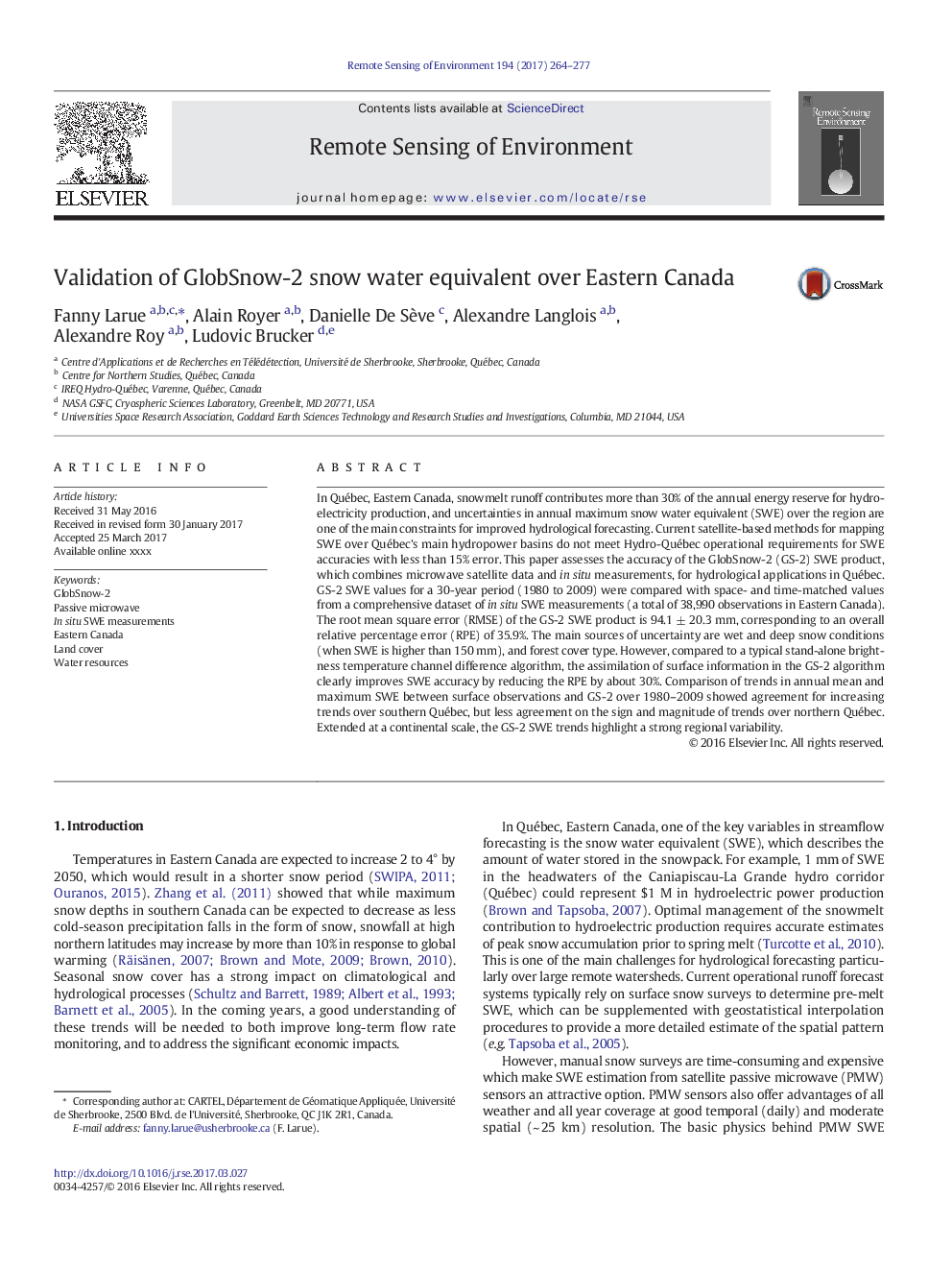| Article ID | Journal | Published Year | Pages | File Type |
|---|---|---|---|---|
| 5755006 | Remote Sensing of Environment | 2017 | 14 Pages |
Abstract
In Québec, Eastern Canada, snowmelt runoff contributes more than 30% of the annual energy reserve for hydroelectricity production, and uncertainties in annual maximum snow water equivalent (SWE) over the region are one of the main constraints for improved hydrological forecasting. Current satellite-based methods for mapping SWE over Québec's main hydropower basins do not meet Hydro-Québec operational requirements for SWE accuracies with less than 15% error. This paper assesses the accuracy of the GlobSnow-2 (GS-2) SWE product, which combines microwave satellite data and in situ measurements, for hydrological applications in Québec. GS-2 SWE values for a 30-year period (1980 to 2009) were compared with space- and time-matched values from a comprehensive dataset of in situ SWE measurements (a total of 38,990 observations in Eastern Canada). The root mean square error (RMSE) of the GS-2 SWE product is 94.1 ± 20.3 mm, corresponding to an overall relative percentage error (RPE) of 35.9%. The main sources of uncertainty are wet and deep snow conditions (when SWE is higher than 150 mm), and forest cover type. However, compared to a typical stand-alone brightness temperature channel difference algorithm, the assimilation of surface information in the GS-2 algorithm clearly improves SWE accuracy by reducing the RPE by about 30%. Comparison of trends in annual mean and maximum SWE between surface observations and GS-2 over 1980-2009 showed agreement for increasing trends over southern Québec, but less agreement on the sign and magnitude of trends over northern Québec. Extended at a continental scale, the GS-2 SWE trends highlight a strong regional variability.
Related Topics
Physical Sciences and Engineering
Earth and Planetary Sciences
Computers in Earth Sciences
Authors
Fanny Larue, Alain Royer, Danielle De Sève, Alexandre Langlois, Alexandre Roy, Ludovic Brucker,
